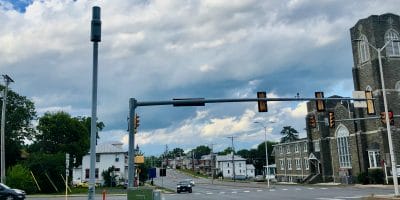
A contributed perspectives piece by the Climate Action Alliance of the Valley (CAAV)
Editor’s Note: This is an extra installment of a regular series of contributed news roundups about statewide environmental and news. This piece highlights, with links to further coverage in various media outlets, recent environmental news stories of significance to Virginia, with a focus on energy and the environment.
Energy
Pipeline controversies continue. What should happen after cancellation of the Atlantic Coast Pipeline (ACP) to property seized under eminent domain and through agreements with landowners? The same question pertains to land seized for the Mountain Valley Pipeline (MVP). Two Roanoke landowners sued for just compensation and received a jury award for considerably more than the MVP owners wanted to give.
President Biden’s newly created Interagency Working Group on Coal and Power Plant Communities reported that “Southwest Virginia is fourth most coal-dependent area in U.S—potentially making the region a priority for federal funding to revitalize communities as part of the transition to renewable energies.
On May 19 the Virginia Department of Mines Minerals and Energy will conduct its quarterly test of the North Anna nuclear plant “early alert” system.
Virginia will distribute $20 million from Volkswagen settlement funds to localities to purchase electric school buses. Virginia Tech is moving ahead on a “multi-modal” transportation center to allow centralizing of bus routes and routes and to serve as a local hub for “bike sharing and larger bus services” such as the Virginia Breeze that also serves Harrisonburg, Staunton, and Front Royal. Planning for expansion of rail transit in the New River Valley continues, though where the station will be is not yet clear. Planning for high speed rail service between Richmond and Union Station will be slowed to assess the effect on the project because the route passes above a “long-hidden Black cemetery” considered “a historic burial ground.”
Climate and Environment
Virginia’s Natural Resources Conservation Service is funding a Trout Unlimited initiative “to enhance/restore native trout habitat and water quality in the Upper James, Shenandoah and Upper South Branch Potomac watersheds.” $2.9 million will aid the effort in “Rockingham, Page, Augusta, Highland, Bath, Rockbridge and Shenandoah counties.” The state’s Wildlife Resources Department will impose a ban on removing box turtles and other reptiles from the wild. The invasive, plant-eating spotted lanternfly is increasing its presence in Virginia. If you spot one, contact the local Cooperative Extension Service. Virginia’s “northern long-eared, little brown and tri-colored” bat population has been hard-hit by white-nose syndrome, a fungal disease. Efforts by engineering students at JMU may benefit the health of the Chesapeake Bay and sea turtles. They’re working on buoys to “help the Chesapeake Bay Foundation monitor the health of the bay … [and] the Brevard Zoo monitor the migration of leatherback sea turtles off the coast of Florida.”
The Southern Environmental Law Center reported that its challenges to four water permits in North Carolina yielded a requirement that large hog-farm operator “Smithfield must fix pollution, environmental injustices at hog operations producing biogas.” That biogas comes into Virginia and is used to produce electricity at a Dominion plant.
“The Virginia State Air Pollution Control Board unanimously approved a final regulation prohibiting the use of certain hydrofluorocarbons in specific end uses.” They “can have a significant impact on global warming in part due to their long presence in the atmosphere before breaking down.”
NOAA has issued new “climate normals” for “baseline data of temperature, rain, snow and other weather variables.” This graphic will let you see what’s expected for Virginia. The EPA has restored and updated it climate indicators webpage and has a map and descriptions of circumstances in specific locations. One notes earlier bloom dates for Washington, D.C.’s cherry blossoms and another, land loss along the Atlantic seaboard.
Planning continues for a Waynesboro location of the Virginia Natural History Museum housing “exhibits focusing on many of the characteristics that make the Blue Ridge and Shenandoah Valley a truly distinctive region.”
A land conservationist donated the 7,300-acre Falkland Farms in Halifax County to the state, so it can target biodiversity conservation and eventually provide public outdoor recreation opportunities” there.
Did you know that Virginia is home to a very unique, and very large fish, Walleye? “That New River strain of fish is so unique that you can’t find them anywhere else on the planet.” How big? The two largest caught were 15+ and 22+ pounds!
Upcoming Events:
Sierra Club Program on Plastic Pollution in Virginia – June 9 at 7 pm. Eye-opening program on: single-use food containers and beverage items and to large items like fiberglass boats. Learn about the new Virginia Plastic Pollution Prevention Network. Join online, free.
Ivy Creek Foundation Field Trips for Kids – Contact Catherine Boston, Director of Education for ICNA, at [email protected]. Or fill out this Field Trip Request Form.
The Climate Action Alliance of the Valley (CAAV) is a non-profit, grassroots group in the Central Shenandoah Valley that educates legislators and the public about the implications of the Earth’s worsening climate crisis.












